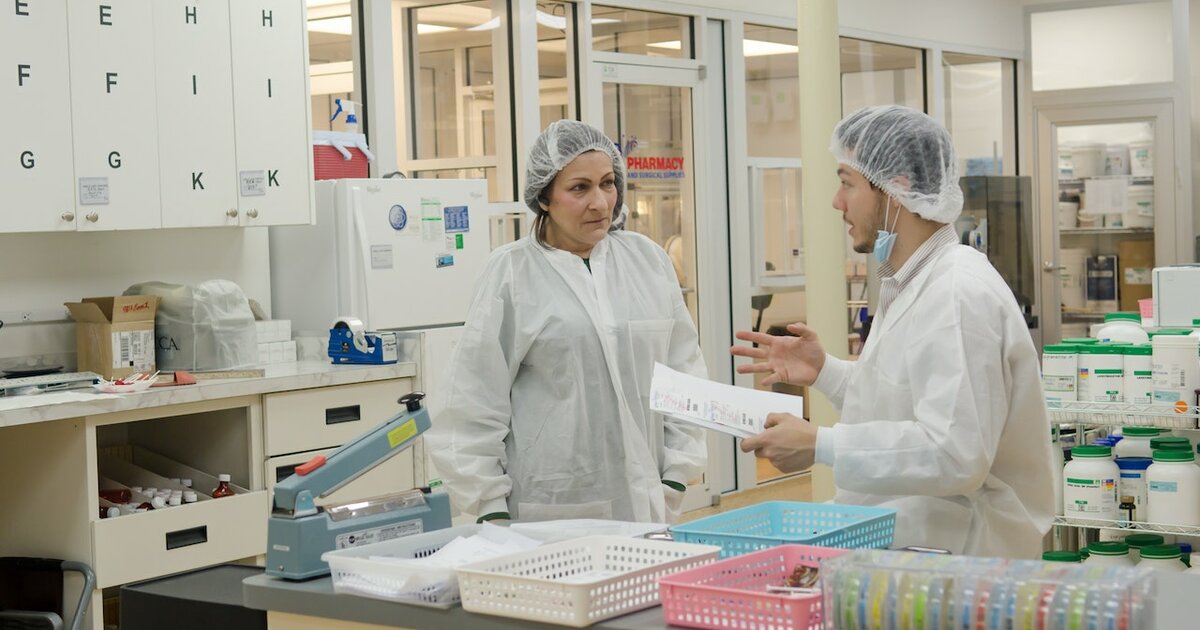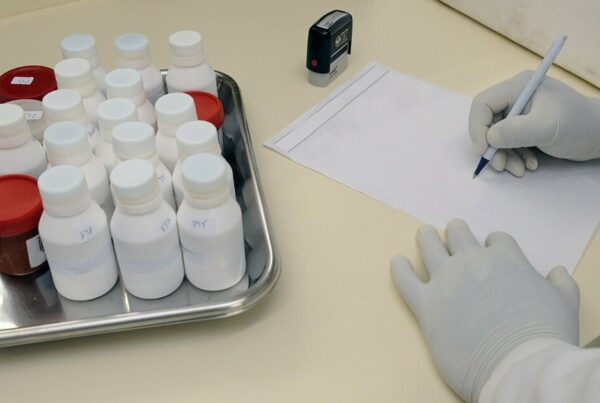When you are doing clinical trials, many things must be done before the trial can begin. For example, you need to make sure you have a detailed and defined trial procedure, get your department involved and gather approval, and make sure you have a team and subjects.
Additionally, one of the steps you have to do is get an IRB review. This has to do with the safety of your experiment, and the risk involved. To prevent abuse or unnecessary procedures and trials, the risk level must be determined and the benefits to dangers ratio must be weighed.
But what is minimal risk, also known as risk level one, as well as the other levels of risk that can occur, and how does it impact your research? The minimal risk definition is focused on the amount of harm that can come to your research subjects. Each risk level has different guidelines and protocols, so making sure you account for the right risk level is important to making sure your study goes well and isn’t violating any protocols.
Making sure you fully understand the risk levels and how this minimum risk changes your research compared to other risk levels is vital to making sure your trial goes smoothly and isn’t bogged down by paperwork.
Minimal Risk Definition
According to the FDA, for clinical trials, the minimal risk definition is, “The probability and magnitude of harm or discomfort anticipated in the research are not greater in and of themselves than those ordinarily encountered in daily life or during the performance of routine physical or psychological examinations or tests”.
That’s a little wordy. To put it simply, the minimal risk definition is how likely harm and discomfort are for your patient compared to the amount of harm or discomfort found in daily life or at a regular doctor’s appointment.
With clinical trials done that only pose a minimum risk, they generally only need to be monitored by the Principal Investigator (PI) and Institutional Review Boards (IRB).
Examples of Minimal Risk Research
Some examples of minimal risk research are:
- Collection of pre-existing data or research
- Observational studies
- Blood draws
- Physical exams
- Routine psychological testing
- Genomic studies
- Survey/Questionnaire that is non-invasive
- Collection of data from recordings
- Mobile applications that track information
- Ultrasounds
- Focus groups
Since these all provide minimal harm and discomfort, they can be considered a minimum risk.
Is an MRI Minimal Risk Research?
An MRI is often considered a risk level one. This is because the imaging is considered non-invasive as it is just viewing the brain. This is especially true if those given the MRI are considered healthy and the research is just to understand basic brain function.
However, on occasion, MRIs can be considered greater than minimal risk research, risk level two, instead. This often happens when sedation, drugs, or contrast are used or should be used, as it provides an additional risk to the patient, and harm and discomfort can come to the patient if sedation or drugs are not used.
Unfortunately, every subject is different, so different methods will have to be used. Nothing can be fully put under one category, as certain subjects may respond differently to questions, studies, and tests.

Differences Between Risk Level One and Risk Level Two
The difference between risk level one and greater than minimal risk research depends on the research methods you are using. The minimal risk definition is where people face a minimum risk that isn’t any different than they would face in daily life or at a doctor’s appointment.
The definition of risk level two is when the risk of harm or discomfort increases past average amounts. However, the difference is small.
So, to put it simply, the difference between these two risk levels is the chances or risk of harm to the patients.
Some examples of greater than minimal risk research studies are:
- PET scans
- Manipulation of the emotion of the subjects
- Studies where deception is involved
- Studies where sensitive information is collected or a breach of confidentiality is expected
- Phase IV drug studies with minor concerns for safety
- A single dose of an experimental agent
- Sensitive information – Anything that can be damaging or impact a subject’s finances, employability, insurability, reputation, or may be considered a stigma if the information is leaked (subject’s feelings of employer, violence or sexual abuse, depression, mental health disorders, religious beliefs)
What Can Make a Study Risk Level Two?
Risk level one is considered an everyday danger, while risk level two is considered to be things that can pose temporary, but harmful, problems both physically and in other ways, such as a damaged reputation.
So what makes studies a higher level? Usually, studies go above the risk level two level when they can cause permanent damage, illness, or death. While risk level two studies can cause death or illness, the risk of this occurring is very low, whereas, in moderate or high-risk studies the chances are higher.
Additionally, if there is a good amount of unknown with the trial, the risk would be higher. For example, if there is a lack of knowledge on how the medicine will affect people, the study would be higher than the risk level two parameters.
Can a Study Fall Into Two Categories?
Currently, most studies are put into one category. However, some studies can fit into two or more categories. For the most part, this occurs when a study generally has a low or fairly low level of risk, but there are some subjects or situations where the risk might be higher.
For example, thinking back to the MRI. For the most part, a trial that involves MRIs would be considered risk level one. However, if you have to additionally collect sensitive information, or are going to research vulnerable parties, or use a drug on the subjects to determine how it affects the brain, this would change it to risk level two.
However, if there are only one or two subjects that have to be sedated as they don’t handle MRIs well, the study may mostly be considered risk level one, with just a patient or two that will be facing risk level two.
When that happens, you usually pick the highest of the categories, even if it isn’t always at that level. This is just to make sure everything is handled properly and reviewed as it should be.
What Are the Four Different Risk Levels?
There are four main different risk levels when it comes to risk assessments. On top of risk level one and risk level two, there is also a moderate risk (risk level three) and high risk (risk level four). Each one presents a slightly higher chance of risk to its subjects than the previous.
Minimal Risk
Risk level one is also known as no greater than minimal risk. As we have mentioned, the risk is lower than or at the level of risks in daily life like blood draws. Usually, these tests are highly confidential or require no confidential information collection. Minimal intensity monitoring is used here.
Greater Than Minimal Risk
Risk level two is also known as a minor increase over minimal risk. There is usually a medium to a high probability that a minor event will happen and that the event is reversible. For example, headaches.
Additionally, the chances of serious harm are very low, such as an allergic reaction that could lead to death. Low-intensity monitoring is required at this point.
Moderate Risk
The definition of moderate risk is considered to have a medium to a high probability of a moderately severe problem occurring. This usually means a worsening of a disease or health issue that isn’t fatal like seasonal allergies or pneumonia. Usually, moderate intensity monitoring is required at this point.
It is also known as risk level three.
Some examples of moderate risk studies include:
- A study where placebos are used
- Subjects include those with malignant health problems or viral or autoimmune problems.
- Studies that include vulnerable or young populations
High Risk
High risk has a high probability of prolonged or even permanent injury or illness occurring. There may also be a lot of uncertainty about the study and the risks involved. High-intensity monitoring is required at this level.
This study is also known as risk level four.
Although there is danger, there is still a high chance of benefit to the subjects, making the study worth it. If the IRB determines the cost-benefit isn’t high enough, they may propose changing the study a bit, or not allowing it altogether.
Studies that fall under high risk include:
- Studies that involve diseases that have high morbidity or chance of death
- Severely invasive procedures
- Procedures that have a high risk of death or toxicity
- Gene transfer studies
- New chemical drugs that have no data for humans on the safety
- Randomized clinical trials (phases 2b, 3, and 4)
How Minimal Risk Influences Research
Knowing your minimal risk research level is very important when starting a clinical trial. Not only does it allow you to understand the dangers associated with your trial, but it provides you with a recommendation for monitoring levels based on your risk level.

Additionally, if the CTRC Protocol Review Committee deems that your test needs additional monitoring, they may require more monitoring or more frequent checks to make sure everything continues to stay safe.
What Are The Monitoring Requirements for Risk Levels?
Depending on your risk level, there are four types of monitoring. Generally, reporting to the IRB whenever unexpected problems occur is always required, no matter the risk level.
- Minimal Intensity Monitoring – Your PI and co-investigator will keep an eye on the study and report on time. Any unexpected events or important information will be reported to the IRB, CTRC, sponsor, and any other party involved. There will also be a Modified Safety Monitoring Plan that will be reviewed by the CTRC Protocol Review Committee before continuing.
- Low-Intensity Monitoring – Same as above, your PI or co-investigator will record and report anything related to the study or unexpected events to any and every appropriate party. There will be additional team meetings by the PI to discuss and review the protocol. The monitoring plan will be updated if the risk-to-benefit ratio changes
- Moderate Intensity Monitoring – The PI or co-investigator must monitor the study daily. All the requirements in a low-intensity monitoring case must be completed. Additionally, protocols will require a lot of detailed descriptions on things like dosage and when to stop the trial or remove a subject. There must also be surveillance and protection to stop any adverse events as soon as possible. Sometimes, a medical monitor or safety monitor team may also be established.
- High-Intensity Monitoring – All of the above protocols must be met. Additionally, a Data Monitoring Committee is usually required to keep an eye on the safety and efficacy. A Data Safety Monitoring Board is also required that must be independent of the study.
As you can see, how a study is monitored and handled changes a lot depending on the risk research levels. This is why it is important to understand your risk before getting into the study.
These regulations were put in place to prevent research abuse and make sure necessary practices and clinical trials are handled with care. It also prevents a clinical trial from suddenly changing to something riskier for subjects that had not been previously agreed to.
What Does the IRB Do?
It is the IRB team that determines whether a trial can go forward. Before any trial can go forward, the IRB has to weigh any risks and benefits, read through the procedures, and make sure protections are in place.
Additionally, before the trial can start, the IRB has to approve it. If something changes or has to be changed about the study, the IRB also has to approve it before the study can continue.
An IRB team must have at least five members, with one being a scientist, one not a scientist, and one who is not related to the institution conducting the trial in any way.
Updates about the research or trial must be sent to the IRB at least once a year, if not more, and any problems or adverse events must be reported immediately. Adverse events include additional injury that wasn’t anticipated, a complaint from participants, and if procedures aren’t followed correctly.
Problems with Risk Levels
As you might have noticed, the definitions of risk are fairly vague, especially when changing from risk level one to risk level two. This means that every IRB team and even departments have slightly different definitions of risk levels.
This is especially true when people have serious and permanent diseases. For example, if a person has a disease such as HIV, they have to undergo much riskier procedures and tests than the average person would. When mixing these two parties, the risk level can get confusing as it is normal for them to have a higher daily level of risk than other subjects in the same study might, and it becomes vague on what is considered a significant risk.
This can lead to problems with paperwork and getting the trials started as you have to work with the IRB team to determine what the risk levels and monitoring levels of the clinical trial are.
Additionally, when trials are conducted that require collaboration among different parties and departments, each department will have its own IRB. This can lead to differences in opinion of the risk level.
This has the potential to lead to significant selection bias of subjects based on the location and IRB team in charge. This can lead to a lot of confusion, paperwork, and monitoring requirements based on the location.
While this is problematic, the bigger problem is that there is the potential to mess up the study by using the wrong monitoring and risk level requirements in the wrong location.
Looking at the bigger picture, this can also lead to issues with consistency, as each IRB can make its own opinions on what constitutes significant risks.
Conclusion
As you can see, getting the right risk level and accounting for all the potential dangers is important. The IRB will make sure everything is followed accordingly and additional dangers aren’t present that weren’t accounted for.
By taking the time to understand risk levels, where your research falls, and the level of monitoring that is required, you can make sure you have a team in place to handle everything correctly and make sure your trial is approved and ready to go.







